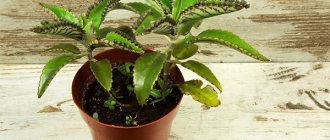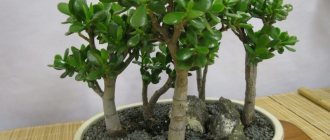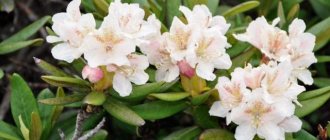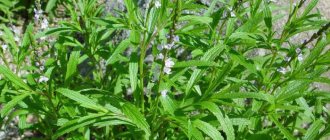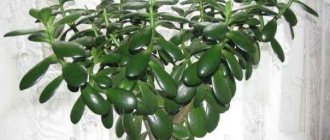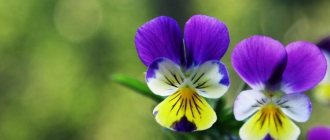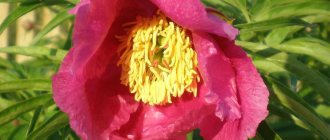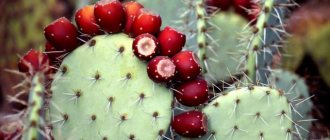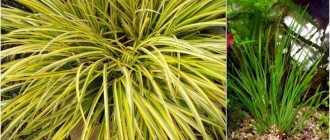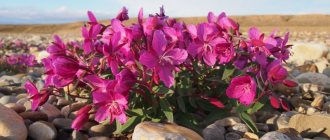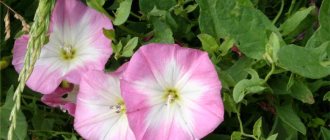This is a perennial herbaceous plant of the Crassulaceae family. Other names for Kalanchoe are bryophyllum, indoor ginseng, Goethe flower, tree of life, home healer, surgeon without a knife, etc. Some of its varieties grow well at home, delighting with beautiful flowers and providing healing assistance. The plant has a bacterial, anti-inflammatory, wound-healing and hemostatic effect. Its juice has a detrimental effect on polio and influenza viruses. Kalanchoe medicinal is successfully used in dentistry, surgery, gynecology, gastroenterology and dermatology.
Kalanchoe and its varieties. Their appearance
Botanical characteristics
Kalanchoe is a native of the hot tropics, is unpretentious and lives in the wild even on rocky slopes. It has taken root well in the Russian climate as an indoor medicine.
What Kalanchoe looks like: the plant belongs to the genus of succulent plants. Their height ranges from a couple of tens of centimeters to four meters, and among them there are vines and epiphytes. Kalanchoe leaves are opposite, alternate, simple, toothed, lobed, entire or pinnately incised. Blooms in the second year of life. The inflorescence is tripartite, has the appearance of a panicle. The flowers are large, red, white, pink, yellow, greenish or purple. Propagated by cuttings, seeds and buds. The stems and leaves of Kalanchoe are used for medicinal purposes. The plant is included in tinctures, creams, and ointments.
Varieties used
There are about 200 species and varieties of plants that grow in America, Africa, and Australia. Most of them are used as ornamental plants, but there are exceptions of Kalanchoe - species that have enormous healing power. Among them are:
Kalanchoe dissected or pinnate - has the greatest healing ability and is widely used in official medicine and the pharmaceutical industry in the production of medicines. It grows up to 2 meters in height, has tree-like fleshy stems with glossy round leaves, on the teeth of which buds develop, ensuring the reproduction of the plant. Kalanchoe blooms in the cold season, forming large panicles on the stalks.
Kalanchoe Blossfeld is recognized by official medicine and uses its medicinal properties in the production of medicines. This species reaches 30 cm in height, has numerous stems, ovate leaves with a red edge. It blooms all winter, forming inflorescences in the form of brushes of dark red, pink or orange color.
Degremona - this species uses its medicinal properties in traditional medicine recipes. The plant reaches half a meter in height, has oblong green leaves, along the edges of which children are formed that can separate and take root in the ground. It blooms in winter, producing bell-shaped inflorescences of pink or purple color.
Laciniata - received the name “deer horns” for its bizarre and original appearance. The flower has carved branched leaves resembling fleshy spines.
Serrata - originally from Menorca, has an unusual color - spotted underneath. The leaves along the edges form rosettes of children, giving the flower a unique decorative effect.
Chemical composition
The plant contains a large number of biologically active components:
- Tannins;
- Vitamins;
- Organic acids;
- Minerals (manganese, zinc, aluminum, iron, magnesium);
- Enzymes;
- Steroid substances (bufadienolides);
- Flavonoids;
- Polysaccharides;
- Ascorbic acid:
Bryophyllum - medicinal properties
The plant has a wide range of medicinal effects on the body:
- Activates redox processes and hematopoiesis;
- Has an antimicrobial and astringent effect;
- Stops bleeding;
- Cleanses and renews blood, restores the circulatory system;
- Stimulates metabolic and metabolic processes;
- Normalizes digestion;
- Prevents fermentation and rotting in the intestines;
- Helps absorb calcium;
- Cleanses the blood and body from radionuclides, waste and toxins;
- Relieves inflammation and eliminates pain;
- Strengthens the immune system and the body's defenses;
- Accelerates the process of cell regeneration and helps heal wounds;
- Lowers cholesterol levels;
- Stimulates the formation and excretion of bile;
- Relieves physical and mental fatigue, has a tonic effect;
- Prevents rapid aging and fading.
KALANCHOE
Application of Kalanchoe
Kalanchoe in folk medicine is taken internally and used externally to treat the following diseases:
- Colds, flu, ARVI;
- Stomatitis, gingivitis, periodontal disease;
- Conjunctivitis and otitis;
- Cough, runny nose, sore throat, tonsillitis, adenoid;
- Gastritis and ulcers;
- Varicose veins;
- Tuberculosis;
- Adenomas, prostatitis;
- Acne and pustular inflammation;
- Joint diseases;
- Erosion and mastitis;
- Psoriasis, eczema, skin ulcers, burns, cuts, bedsores;
- Hemorrhoids:
How to store
The most convenient way to store it is to keep the flower on the windowsill, picking off fresh leaves if necessary.
Freshly squeezed juice is stored in the refrigerator for a week in a glass container.
Self-prepared ointment can be stored for no more than a month, and a ready-made infusion can be stored for 24 hours.
The alcohol tincture retains its healing properties for up to three months.
Does this remedy help in treating a runny nose?
Those who have at least once tried to treat a runny nose with Kalanchoe juice have no doubt: the remedy really helps. Vitamins, micro- and macroelements, plant polyphenols included in the juice (vitamin C, magnesium, iron, manganese, calcium, copper, zinc, flavonoids, phytoncides, tannins and others) have:
- antiseptic;
- anti-inflammatory;
- antiviral;
- antibacterial and antimicrobial actions.
Viral or bacterial rhinitis goes away very quickly.
The product can be used to treat adults and children from the age of two.
Important! For children, juice diluted with water is used. Concentrated Kalanchoe extract can cause a burn to the nasal mucosa.
Negative effects and contraindications of Kalanchoe
The medicinal properties and contraindications of Kalanchoe are due to its rich chemical composition and therapeutic effects on the human body, which depend on the area of application and dosage. External use is practically safe; in rare cases, swelling, redness and burning of the skin may occur. This is a manifestation of allergic intolerance and to avoid negative consequences, therapy should be discontinued.
For internal use, there are contraindications that should be followed. Taking Kalanchoe is not recommended for:
- Liver cirrhosis and hepatitis;
- Hypotension;
- Presence of tumors;
- Pregnancy;
- Children under 3 years of age;
- Individual intolerance:
Varieties used
Scientists know more than 200 species of Kalanchoe . Most plants have only decorative value; flowering varieties do not have medicinal properties. Medicinal types:
- Cirrus;
- Degremona.
They contain a lot of organic acids, microelements, and vitamins. The beneficial properties of the plant are used not only in folk healing practices.
Kalanchoe is included in many ointments, creams, and tinctures. Doctors often use the medicinal properties of Kalanchoe to treat a wide variety of diseases.
Recipes for preparation and use
Rules of application
In order to prepare a high-quality medicinal product, you must adhere to certain rules:
- For treatment, use a plant no younger than 2 years old. This Kalanchoe has already been filled with useful substances and will provide more effective benefits.
- A week before cutting the leaves, stop watering the flower, which will help concentrate more healing components in it.
- The lower leaves of the plant have the greatest healing power.
- Cut leaves cannot be washed; they can only be wiped with a damp cloth.
- They are wrapped in natural fabric and placed in the refrigerator for 10 days.
- After the expiration of the period, the juice is crushed and squeezed out, using glass or wooden containers, since it oxidizes when it comes into contact with metal.
- The recommended course of treatment is two weeks; for more serious diseases, longer therapy can be carried out, but only after consultation with the doctor. It is he who sets the duration and dosage of treatment.
Treatment with leaves
It is advisable to keep freshly cut leaves in a cold place for ten days, but if urgently necessary, they can be used immediately.
The leaf is wiped with a damp cloth, crushed, placed in gauze and applied to the affected areas.
Kalanchoe for acne and boils - apply a compress and secure with adhesive tape, keep for no more than 5 hours, then remove.
For bedsores - remove the skin from the leaf and apply it to the affected area, securing it with a plaster or bandage. They are kept overnight and removed in the morning, and the procedure is carried out until the pathology is eliminated.
For diseases of the gums and teeth - Kalanchoe leaves are crushed and applied to the diseased area. Helps relieve toothache, cure stomatitis, gingivitis and periodontal disease.
For otitis media - put crushed Kalanchoe on gauze and roll up a small turunda. Insert it into the sore ear and keep it overnight. The procedure will relieve pain and draw out pus.
For skin diseases - the skin is removed from a fresh leaf and applied to areas of the skin affected by psoriasis or eczema; the procedure also helps to remove warts.
When is juice needed?
Freshly squeezed Kalanchoe juice helps in the treatment of runny nose, sore throat, tonsillitis. To prepare it, the leaf is crushed and the juice is squeezed through cheesecloth. Store for a week in the refrigerator. Use the product externally and take it internally.
Kalanchoe for cough - for more effective treatment, prepare Kalanchoe with honey: add honey (100 g), interior fat or butter and cocoa (50 g each) to Kalanchoe juice (2 tbsp.). The mixed product is taken one teaspoon with milk.
For a runny nose, drop three drops of medicinal juice into each nostril; after a while, severe sneezing appears and the sinuses are cleared. It is advisable to repeat the procedure every 2-3 hours. For children, the dosage is smaller - 1 drop.
For sinusitis, Kalanchoe juice is dropped into the nose as if you have a runny nose. The procedure is carried out over 4 days. The therapy effectively clears the maxillary sinuses.
With adenoids – children often suffer from adenomas. To alleviate their condition, you need to instill Kalanchoe juice into your nose daily, 3 drops three times a day. The procedure cleanses the cavities, breathing becomes easier, pain decreases.
For tuberculosis, therapy with medicinal juice is used only as an additional remedy. Kalanchoe juice (tsp) is diluted in 1/3 glass of water and taken twice a day before meals.
For uterine erosion, the juice is used to treat gynecological diseases. To do this, dilute it half with water, moisten a tampon and leave it overnight for 2 weeks.
Making a tincture
Kalanchoe with alcohol helps to cope with inflammation of the oral cavity, but it is strictly prohibited for children to use it due to the alcohol content.
- the leaves are crushed and placed in a container of 1/2 volume;
- add vodka to the top;
- put away for 10 days in a dark place, covered;
- shake the container during the infusion process;
- The filtered product is stored in the refrigerator.
Application: Kalanchoe tincture is used in the treatment of diseases of the musculoskeletal system (radiculitis, rheumatism, arthritis, gout), as well as prostatitis and varicose veins.
For joint diseases - the product is rubbed onto sore joints, which relieves pain and relieves inflammation.
For varicose veins - for spider veins, rub the legs with tincture. The course of treatment is long – up to 4 months.
For prostatitis - the tincture is taken orally, a teaspoon before meals, twice a day for 14 days. Then they take a two-week break and continue treatment.
It is not recommended to take the tincture for people with liver pathology and alcoholics.
Ointment recipe
If you wish, you can buy the product ready-made, or you can prepare it yourself.
- take Kalanchoe juice in the amount of 30 g;
- add lanolin, internal fat or butter in an amount of 30 g;
- the mixture is brought to the point of boiling;
- The finished ointment is stored in the refrigerator.
Used in the treatment of eczema, psoriasis, purulent wounds, bedsores, fistulas, frostbite.
When is an aqueous infusion or extract recommended?
A water infusion is recommended for people who cannot take an alcohol tincture.
- crushed Kalanchoe leaves are placed in a container;
- water is added there;
- the proportions depend on the use of the product, if for external use, then in a ratio of 1:5, if for oral use, then 1:10;
- insist in a water bath for half an hour;
- the finished infusion is filtered;
- To obtain the extract, it is boiled until the volume is reduced by half.
Use the product internally according to Art. l. twice a day before meals. Helps in the treatment of the digestive system, tuberculosis, gynecological pathologies. The duration of treatment is one month.
Externally, the infusion is used for rinsing for toothache, stomatitis, and sore throat. The extract is wiped over the face to remove age spots and cleanse the skin of sebaceous dermis and acne. The extract strengthens hair well; rinse your hair with it after washing.
Kalanchoe in cosmetology
The plant takes good care of skin and hair; Kalanchoe juice is added to ordinary perfumes - creams, tonics, lotions, shampoos, balms. Based on the plant, various masks are prepared at home.
Kalanchoe for face
Rejuvenating mask - take 50 ml. juice and 200 ml. water, add tsp. honey The mixed product is applied to the skin and washed off with warm water after 30 minutes.
Mask for oily skin - take half a liter of boiling water, add tbsp. l. linden, chamomile and peppermint, keep for half an hour in a water bath. The infused and cooled product is filtered, Kalanchoe juice is added to the herbal mass and the mask is applied to the skin. After half an hour, remove and rinse your face with the strained broth.
For dark circles under the eyes, it is good to apply a leaf with the peel removed.
Kalanchoe for hair
- take tsp. Kalanchoe, birch and garlic juice;
- add tsp. natural honey and egg yolk;
- the mixture is mixed and applied to the hair;
- the head is covered with a hat or film, wrapped in a scarf;
- Keep it for no more than 2 hours and wash off with shampoo.
Regular procedure revitalizes hair, prevents hair loss and dandruff.
This wonderful plant not only pleases us with its beautiful flowers in winter, but also has a healing effect, is used in the preparation of medicines, purifies indoor air from bacteria and viruses, and also establishes mutual understanding among household members and improves the microclimate in the house.
Basic care requirements during flowering
Caring for this flower at home is not difficult. But you need to know how to care for Kalanchoe during its flowering. This is a houseplant that blooms regularly. This stage begins at the end of winter and lasts from 1 to 3 months.
- At this time, flowers are very demanding in terms of lighting and watering regime. It is not advisable to move them to another place or change the watering schedule. Then the flowering Kalanchoe will throw out new buds for a long time.
- Sometimes Kalanchoe does not bloom. This usually happens due to insufficient care. Also unfavorable conditions in this case are diseases, mold and insect parasites. Therefore, the plant should be inspected regularly in order to begin timely measures to combat such problems.
Preparation of raw materials at home
Only the juice from the mature leaves of the plant has many beneficial properties. Therefore, it is not recommended to use young leaves to obtain juice.
To prepare raw materials at home, you must stop watering the plant 7 days before cutting the leaves. To prepare products from the juice and pulp of the plant, you need to cut off large, fleshy, intact leaves with a thick layer of peel, and then place them in a plastic bag and place them in the refrigerator for 7 days. There is no need to break or grind raw materials. Over a week, under the influence of cold, chemicals will accumulate in the leaves, which have a positive effect on biological processes in the body.
After 1 week, the raw materials must be removed from the refrigerator, and then crushed and squeezed out the juice through 2 layers of gauze. The resulting juice is poured into a glass container and left in the refrigerator for 47 hours to eliminate unwanted sediment.
